|
|
Airport Design. — Washington, 1944Airport Design / Civil Aeronautics Administration. — Washington, D. C. : U. S. Department of Commerce, 1944. — IV, 74 p., ill.INTRODUCTION
This publication, "Airport Design," is to provide persons charged with the responsibility for the site selection, planning, design, and construction of airports with the basic information to assist them in understanding the broad general principles involved and in working out the details of a sound program of airport development. A subject of such magnitude cannot be treated comprehensively in a publication of this size, and this discussion of necessity is limited to a presentation of the elementary considerations in the study of airport site selection, and in the design, planning, and construction of the airport.
Additional details for any particular airport problem and full-size copies of any of the drawings in this manual may be obtained upon request from the Airports Service, Civil Aeronautics Administration, Washington 25, D. C.
With the future progress of aviation, it is expected that standards of airport design will constantly change to meet new and different problems. However, the basic considerations which are included in this presentation are fundamental and should not greatly change.
U.S. DEPARTMENT OF COMMERCE
Jesse H. Jones, Secretary
CIVIL AERONAUTICS ADMINISTRATION
Charles J. Stanton, Administrator
CONTENTS
Introduction ... III
Chapters:
I — Airport Planning ... 1
II — Factors Influencing Airport Size ... 3
Tables —
1. Index of Aircraft ... 8
2. Recommended Airport Design Standards ... 8
3. Airport Size Planning Standards ... 9
4. Airport Lighting Standards ... 10
5. Surface Grades and Minimum Clearances ... 11
6. Recommended Standards for Taxiways ... 11
Charts —
1. Increases for Elevation Above Sea Level ... 12
2. Sample Wind Rose ... 13
III — Factors Influencing the Selection of the Airport Site ... 14
IV — Investigation of Soil Conditions ... 18
V — Drainage System ... 21
VI — Grading ... 24
VII — Airport Turf ... 27
VIII — Airport Pavement ... 33
Table 7. Design Data for Paved Runways ... 37
IX — Airport Lighting ... 38
X — Airport Buildings ... 41
XI —The Master Plan ... 46
Drawings —
1-A. Major Air Terminal on an Area of one Square Mile ... 49
2-A. Major Air Terminal, First Stage of Development ... 50
3-A. Major Air Terminal, Second Stage of Development ... 51
4-A. Major Air Terminal, Third Stage of Development ... 52
5-A. Major Air Terminal, Dimensions of Ultimate Development ... 53
1-B. Major Air Terminal, Where Wind Conditions Permit a Triangular Runway Alignment, Ultimate Development ... 54
2-B. Triangular Runway Alignment, First Stage of Development ... 55
3-B. Triangular Runway Alignment, Second Stage of Development ... 56
4-B. Triangular Runway Alignment, Third Stage of Development ... 57
5-B. Triangular Runway Alignment, Dimensions of Ultimate Development ... 58
8. Suggested Master Plan Layout for Major Air Terminal ... 59
7. Suggested Master Plan Layout for Major Air Terminal ... 60
8. Suggested Master Plan Layout for Major Air Terminal ... 61
9. Suggested Master Plan Layout for Major Air Terminal ... 62
10. Suggested Class I Development ... 63
11. Suggested Class I Development ... 64
12. Suggested Class II Development ... 65
XII — Airport Maintenance ... 66
Appendixes:
I — List of Publications and Materials on Airports ... 89
II — Survey Material on Approach Protection ... 72
III — Directory of CAA Regional Offices ... 72
IV — Glossary of Terms ... 73
Chapter IAIRPORT PLANNING
Much has been learned In the past few years concerning the necessity of proper planning in the construction of airports, and the information now available, if utilized, is sufficiently comprehensive to insure satisfactory results. It is a comnonly acknowledged and well known fact that if costly mistakes are to be avoided in the undertaking of any city development, a comprehensive, preconceived plan is of essential importance. Nowhere is this more true than in the selection of a site and the development of an airport.
Of first importance in the planning of any airport is the consideration of the type of aircraft operations the port is to serve. Most large cities are faced with the necessity of providing one or more terminal airports to serve their widespread population. Operations from these terminal airports eventually will be confined, in the main, to scheduled air transports and large scale aerial taxi service. In addition to these terminal airports, most large cities will have specialized airports which will furnish storage and operating facilities for such activities as private flying, sales, service, school, aerial photography, crop dusting, etc.
Of special importance to the air terminal of a large city is the proper coordination of the various forms of surface transportation with air transportation in order that a ready exchange of traffic is facilitated. Existing transportation systems must be taken into account in choosing the airport site.
The problems of the medium size city are similar to those of the large cities. One terminal airport may be expected to serve the community's need for some time to come, with auxiliary fields to provide facilities for the miscellaneous operations other than scheduled air transport service.
In the case of smaller cities and communities, the airport will be expected to accomodate both the miscellaneous operations and the scheduled transports.
A common mistake in the past has been the starting of an airport on a limited area located in such a way that expansion was economically impossible because of paved streets, highways, railroads, factories and other permanent developments. The result has been that many of these airports have proved inadequate in the face of the steady growth and expansion of local operations and the increased size of the scheduled transports. Many have had to be abandoned in favor of new locations which provided sufficient area.
The experience and knowledge gained from the past indicate that in the selection and development of any airport site emphasis should be placed upon the acquisition of a land area sufficient for the type of operations which the airport will ultimately serve, even though the development of only a portion of it is undertaken initially.
Of first consideration, therefore, in the planning of any airport is the determination of the type of airport necessary for the aviation activities contemplated. Not only should provision be made for present operations, but careful consideration should be given to long range planning for all future operations as nearly as they can be anticipated.
In planning an airport for a given community, due consideration must be given to the relationship which the proposed airport will bear to existing and proposed airports in the vicinity, state and region.
Many states maintain a Department of Aeronautics or Planning Board and these agencies should be consulted in preliminary planning. The State or regional airport plan should be consulted since the purpose of preparing these plans is to study the airport needs of individual municipalities from the point of view of a State, regional and national system of airports to serve aviation.
All airport construction and improvement projects should be planned in a series of progressive stages commonly referred to as stage construction. The progressive stages of development should be planned to accomplish additional usable units as the increasing need for additional airport facilities occur. All stage construction should be in conformity with the master plan for the ultimate development. The preparation of the master development plan is treated comprehensively in a later chapter in this presentation.
In the preliminary planning and study, consideration should be given to the following factors:
1. Population of the city and its trading area.
2. Distance between adjoining cities or airports and the area in square miles to be served by the airport.
3. Local topography. Topography having mountains or low swampy areas affording few suitable sites may, because of the high cost of development, necessitate two or more small or medium size cities or counties combining their finances to construct a suitable airport. Combination landplane and seaplane bases may be possible and desirable in some localities.
4. Local flying. This includes the activities of flying schools, the number of privately owned aircraft located in the community, the number owned by commercial firms, and charter operations, both local and itinerant. Requirements for these various types of operations should be studied with present, immediate future, and future requirements in view.
5. Scheduled airline requirements both intrastate and interstate, present and future.
6. Aerial tourist travel, including private planes, charter operations, and seasoned fluctuations of airline traffic due to tourist travel.
7. Postal receipts of the city and its trading area to evaluate air mail and express possibilities.
8. Retail sales of the city and trading area which will give some indications of the potential aviation business in the locality.
9. National defense. This important factor cannot be overlooked in planning the location and size of any civil airport.
10. Intermediate point on an established airway for emergency, refueling or convenience.
11. Possibility of diversity and volume of air traffic necessitating the location of several airports of different classes around a municipality.
Sample pages
Download link (pdf, yandexdisk; 121 MB)
18 октября 2023, 13:56
0 комментариев
|
Партнёры
|

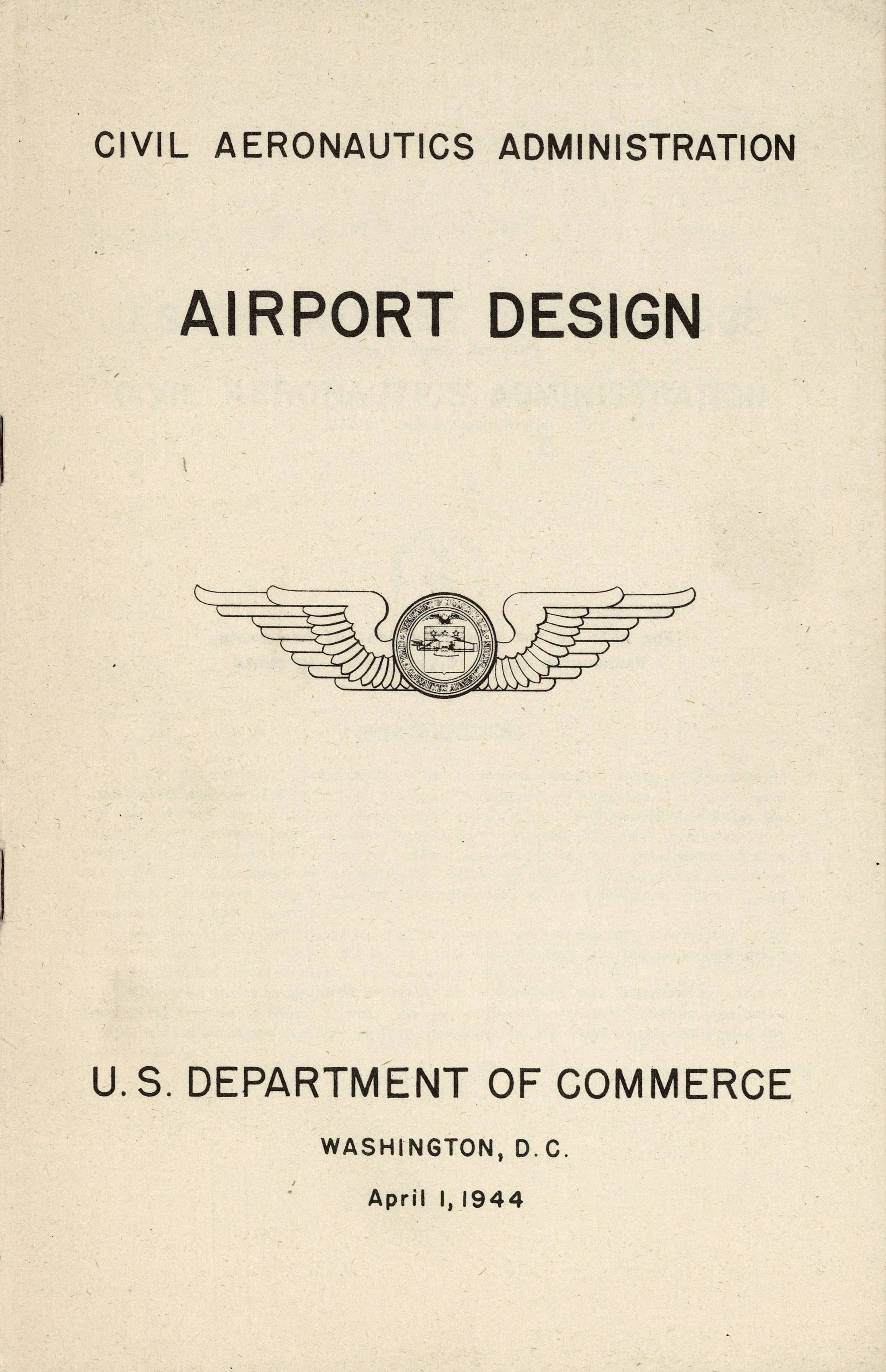
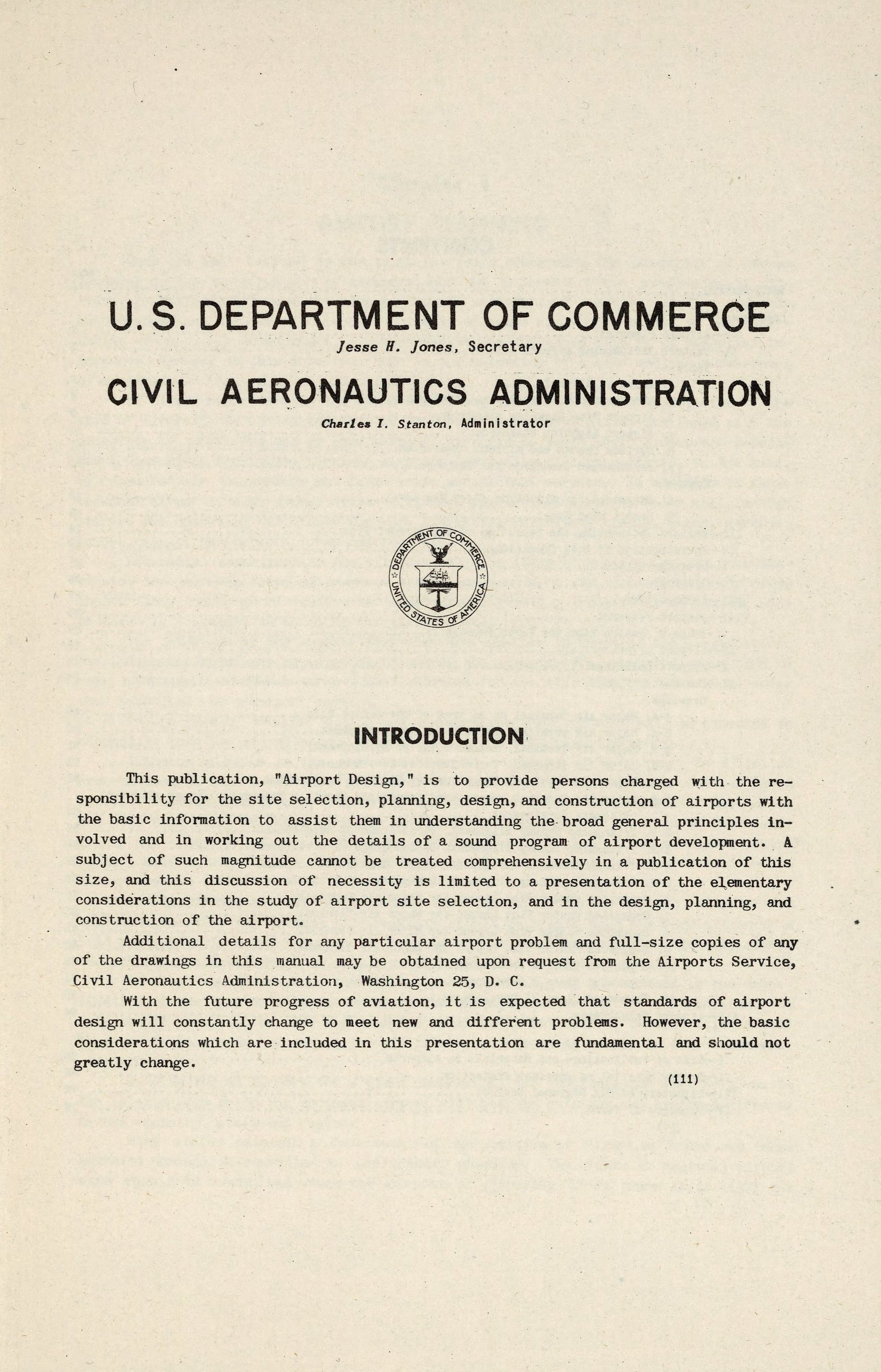

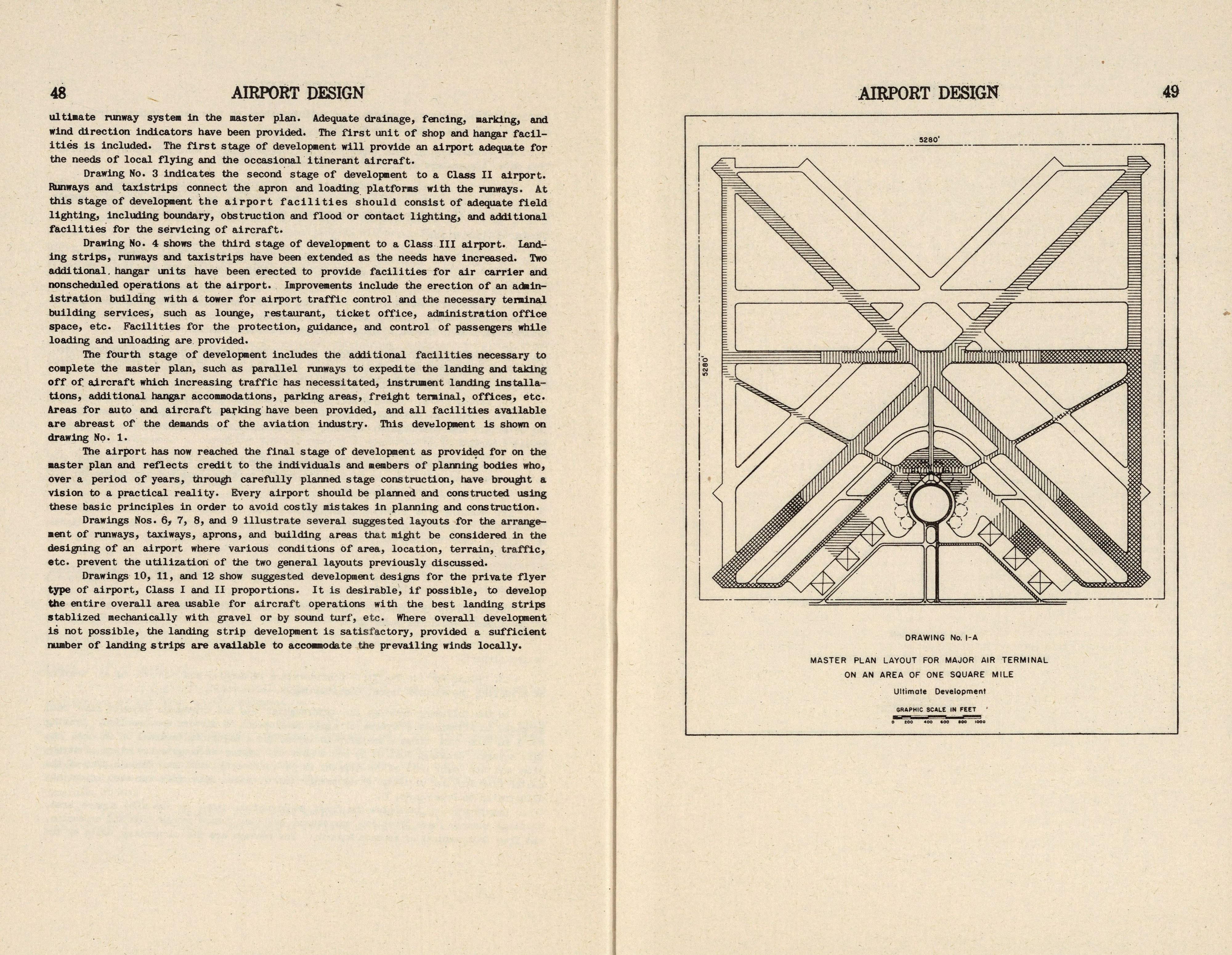
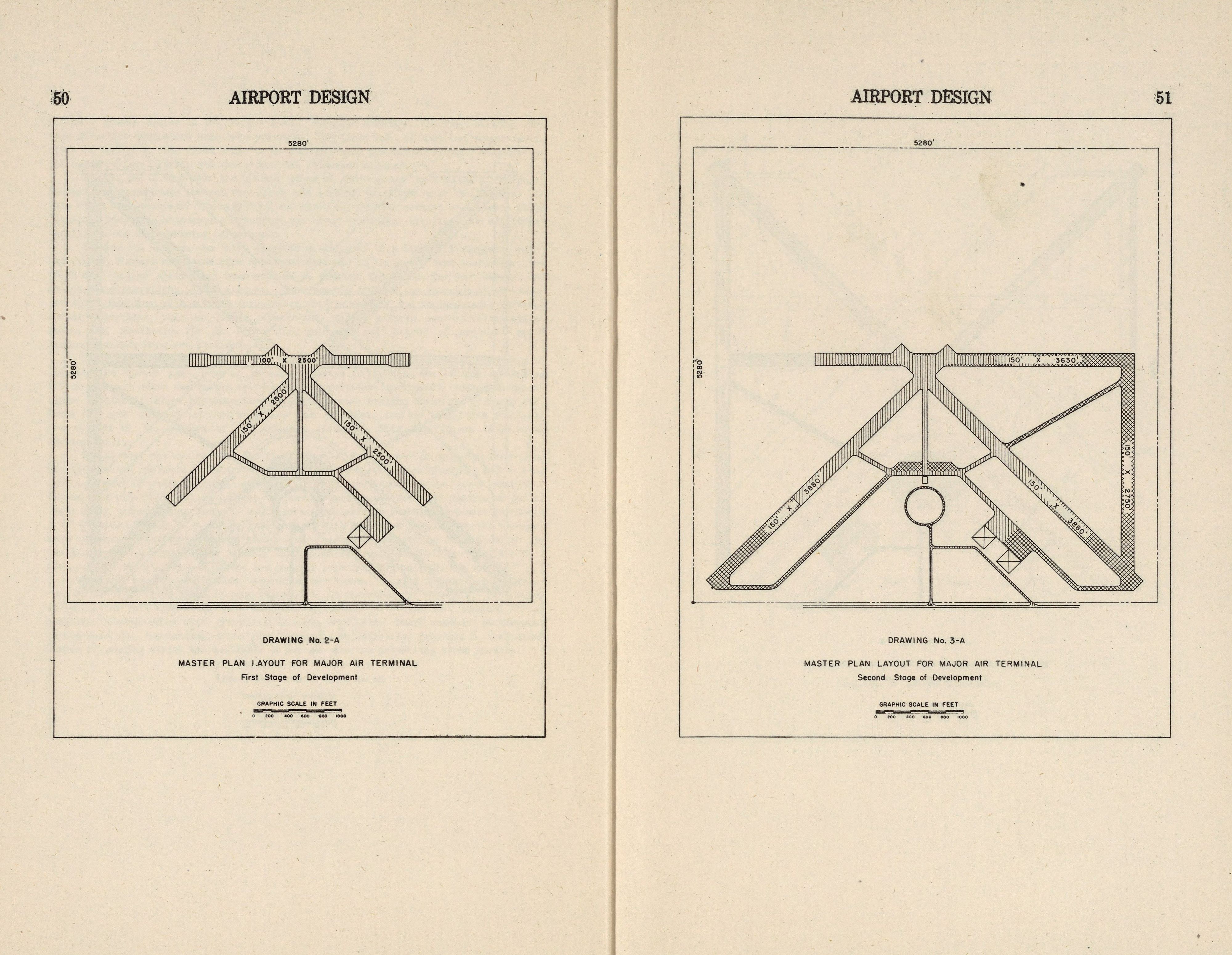
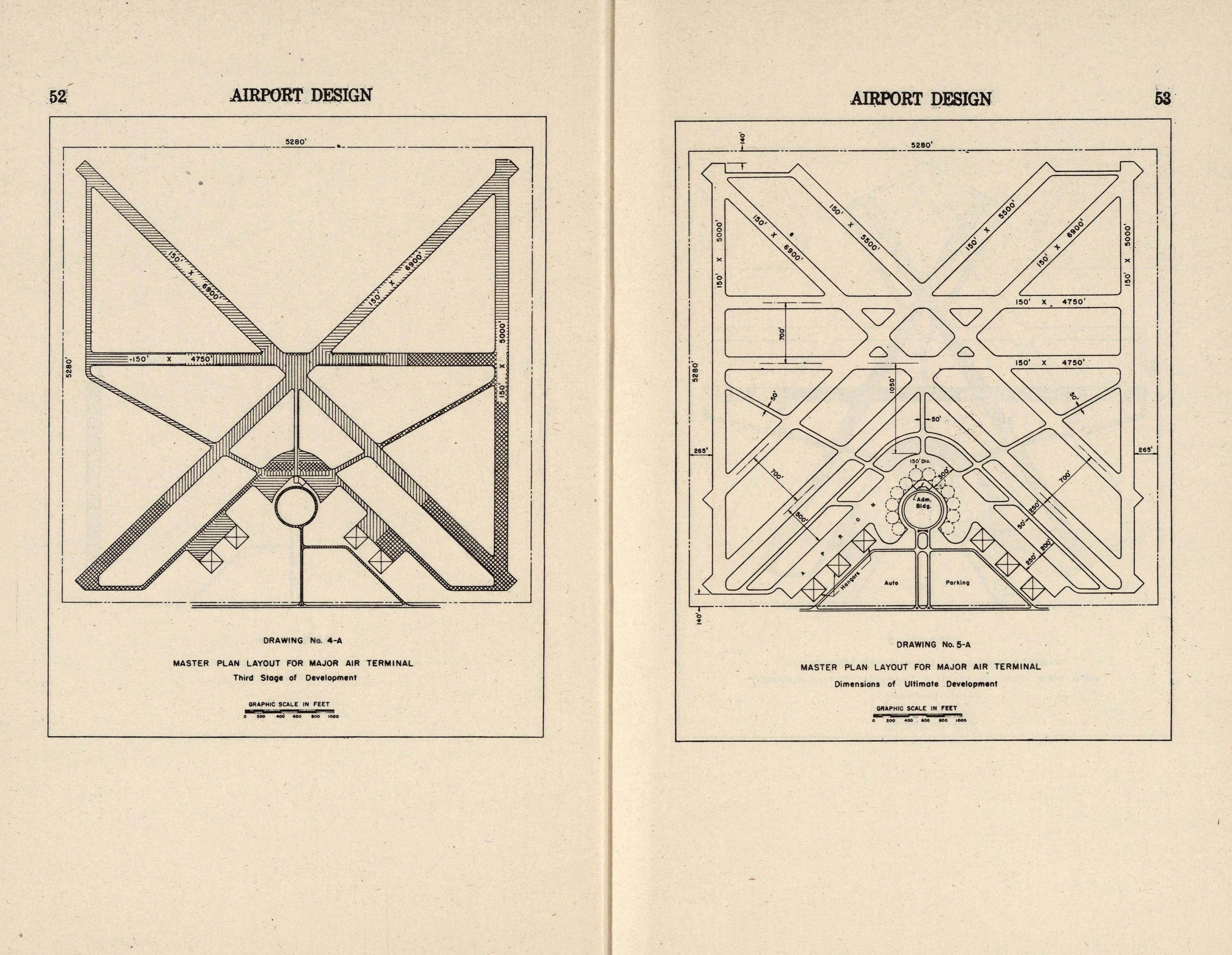
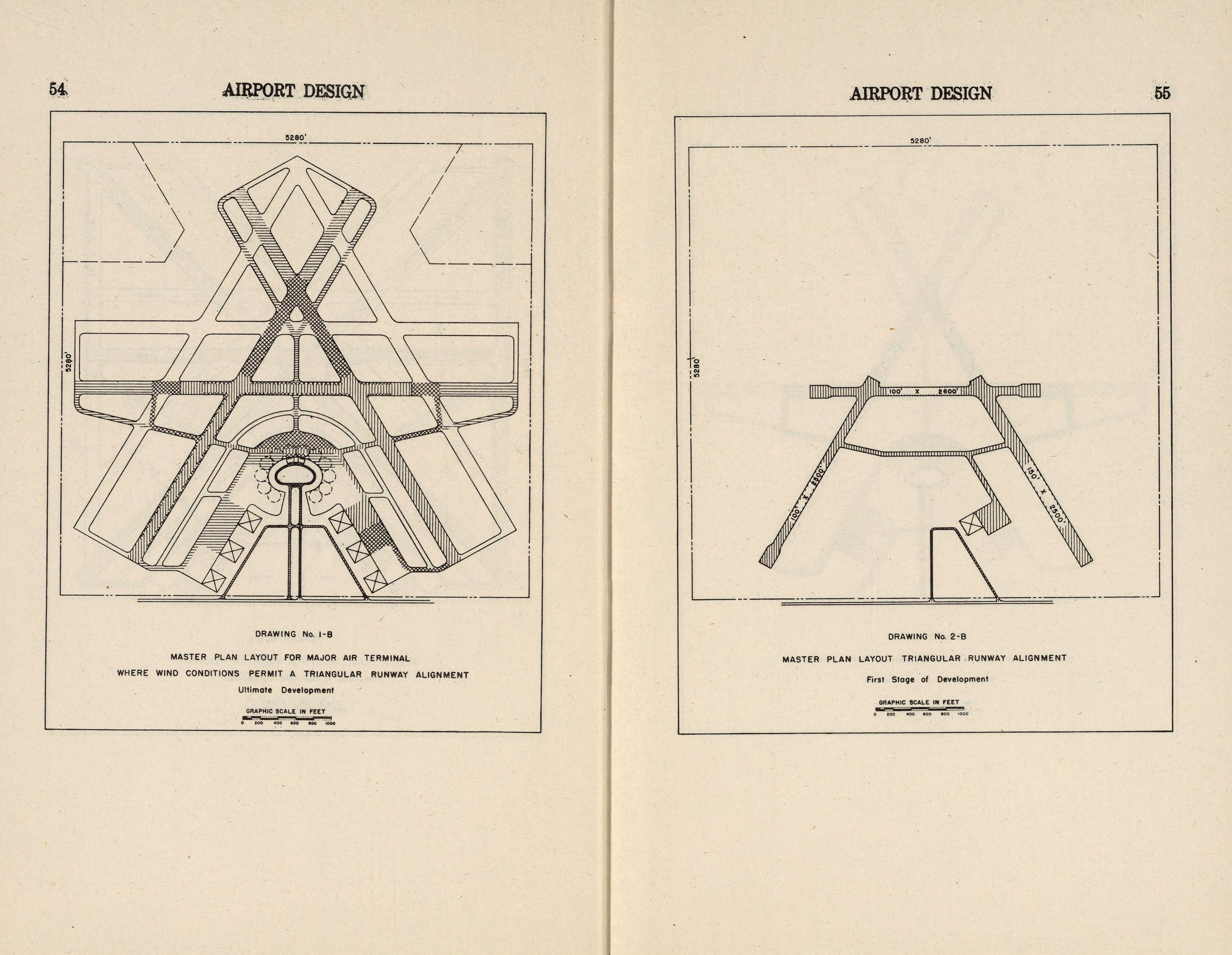
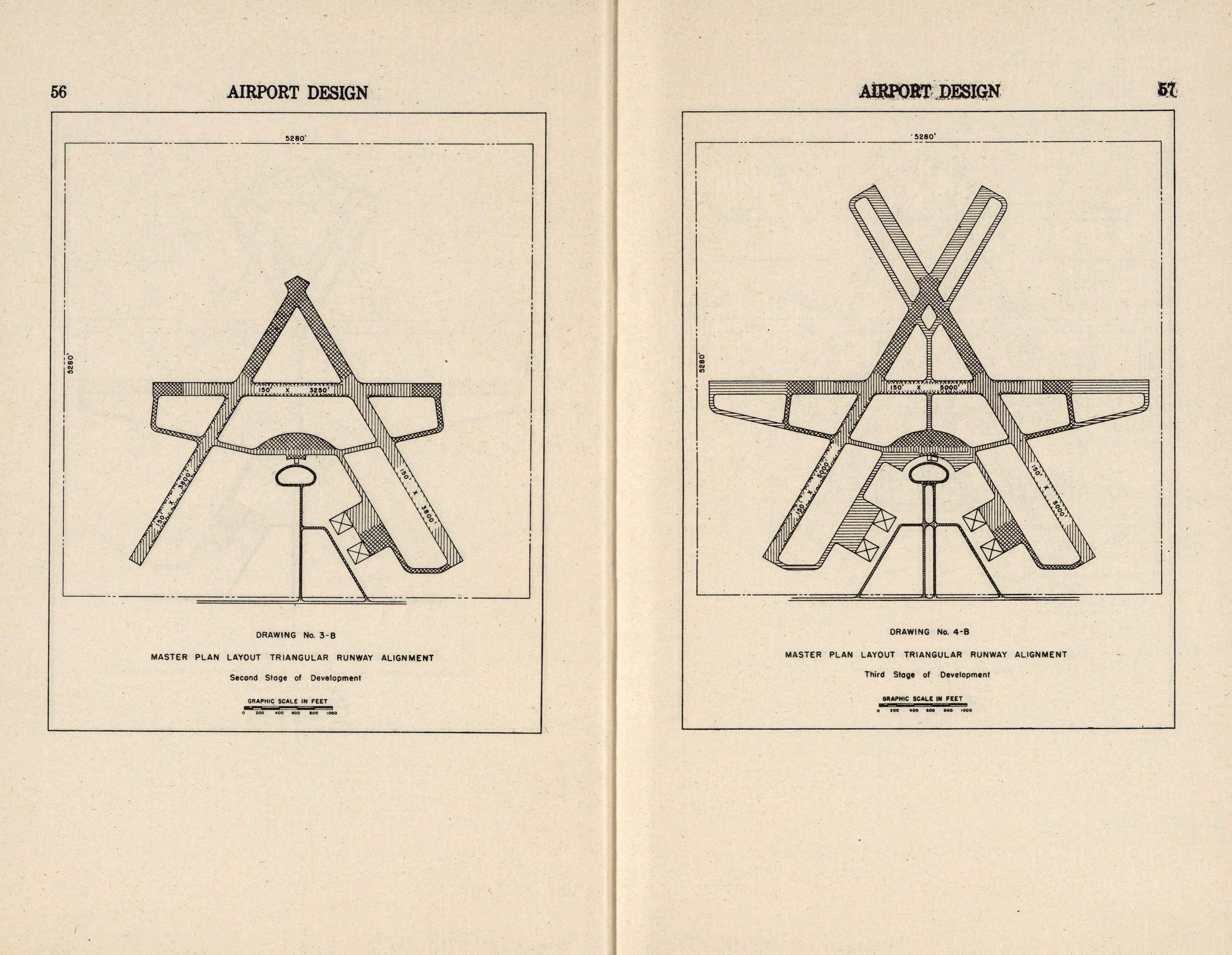
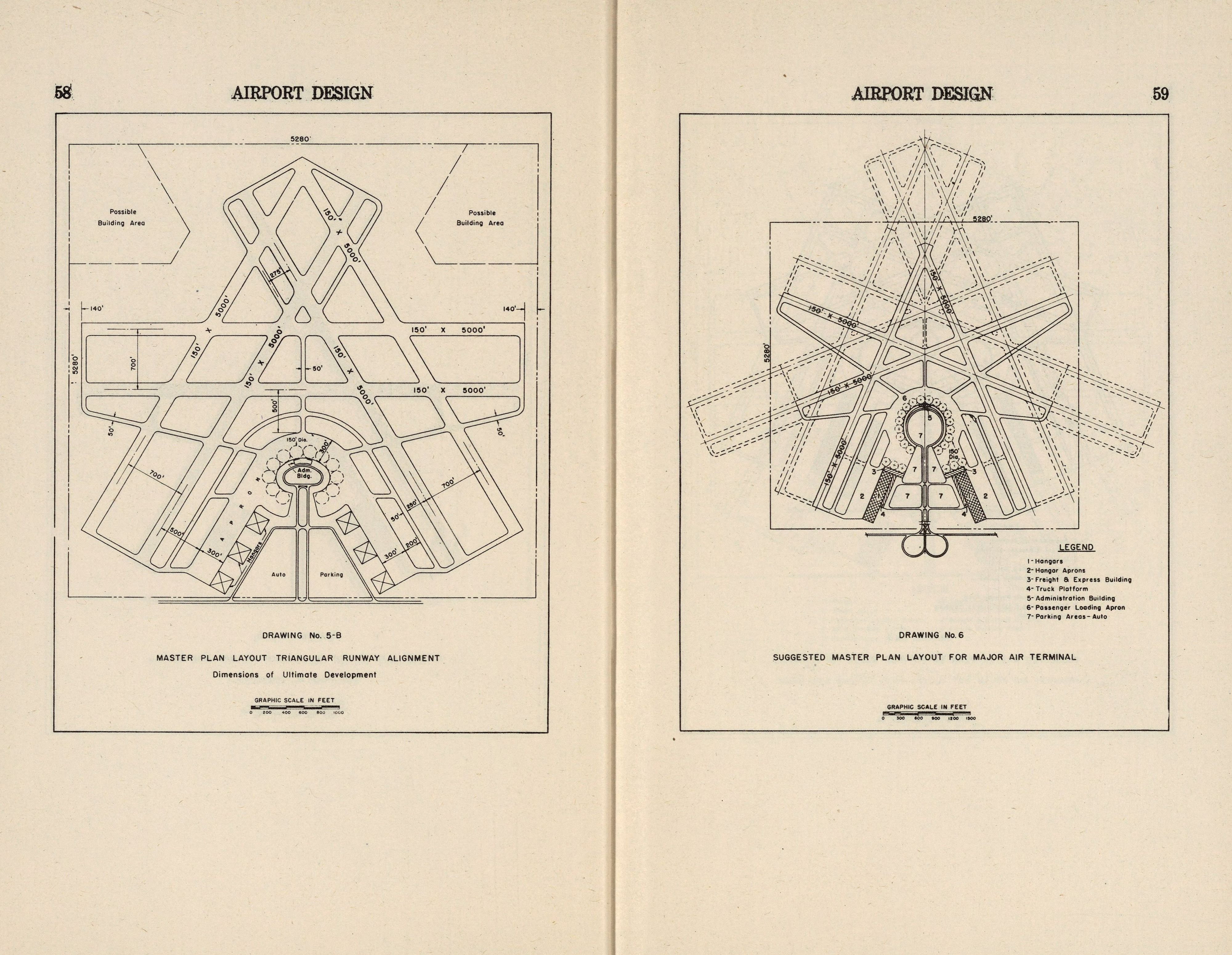
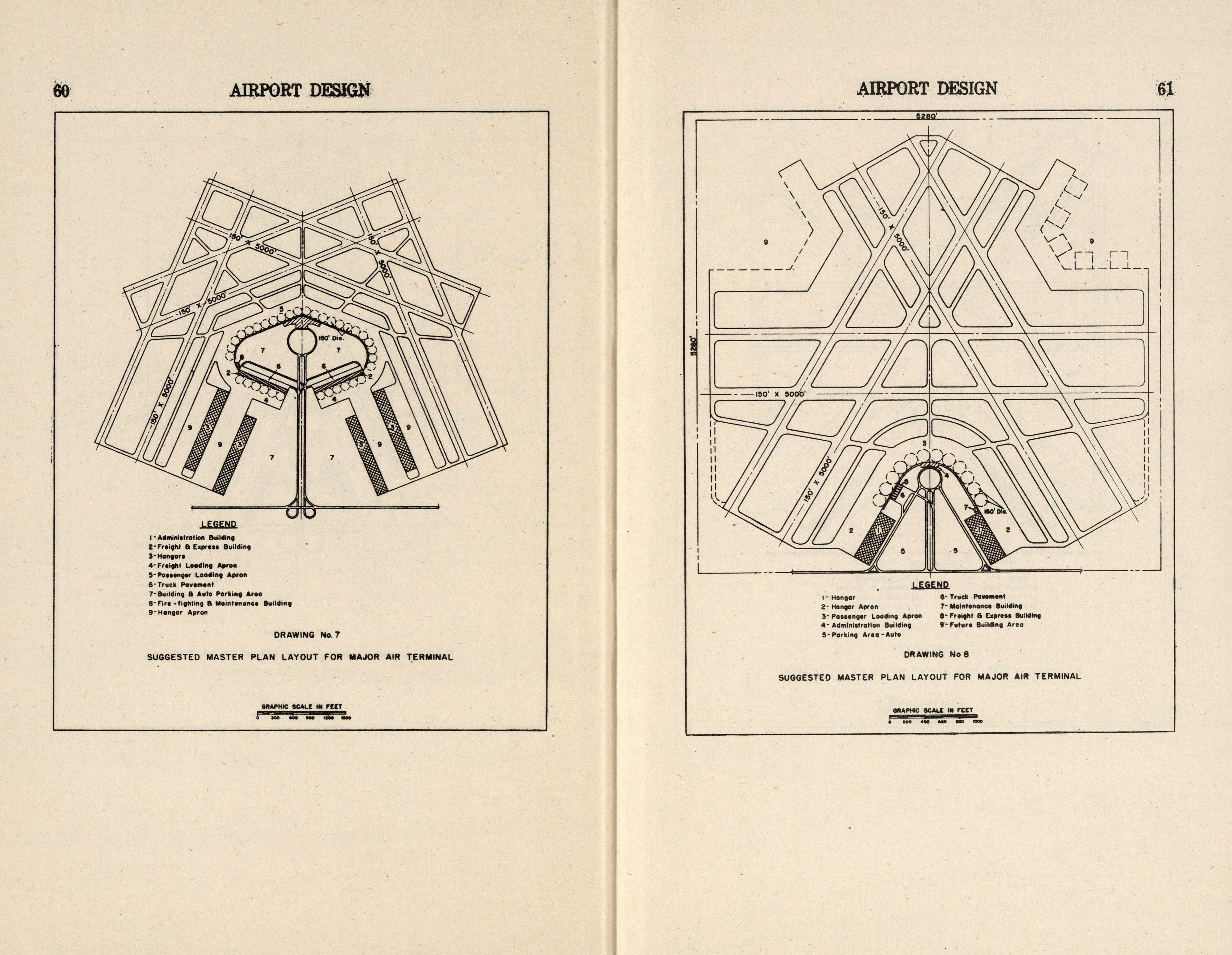
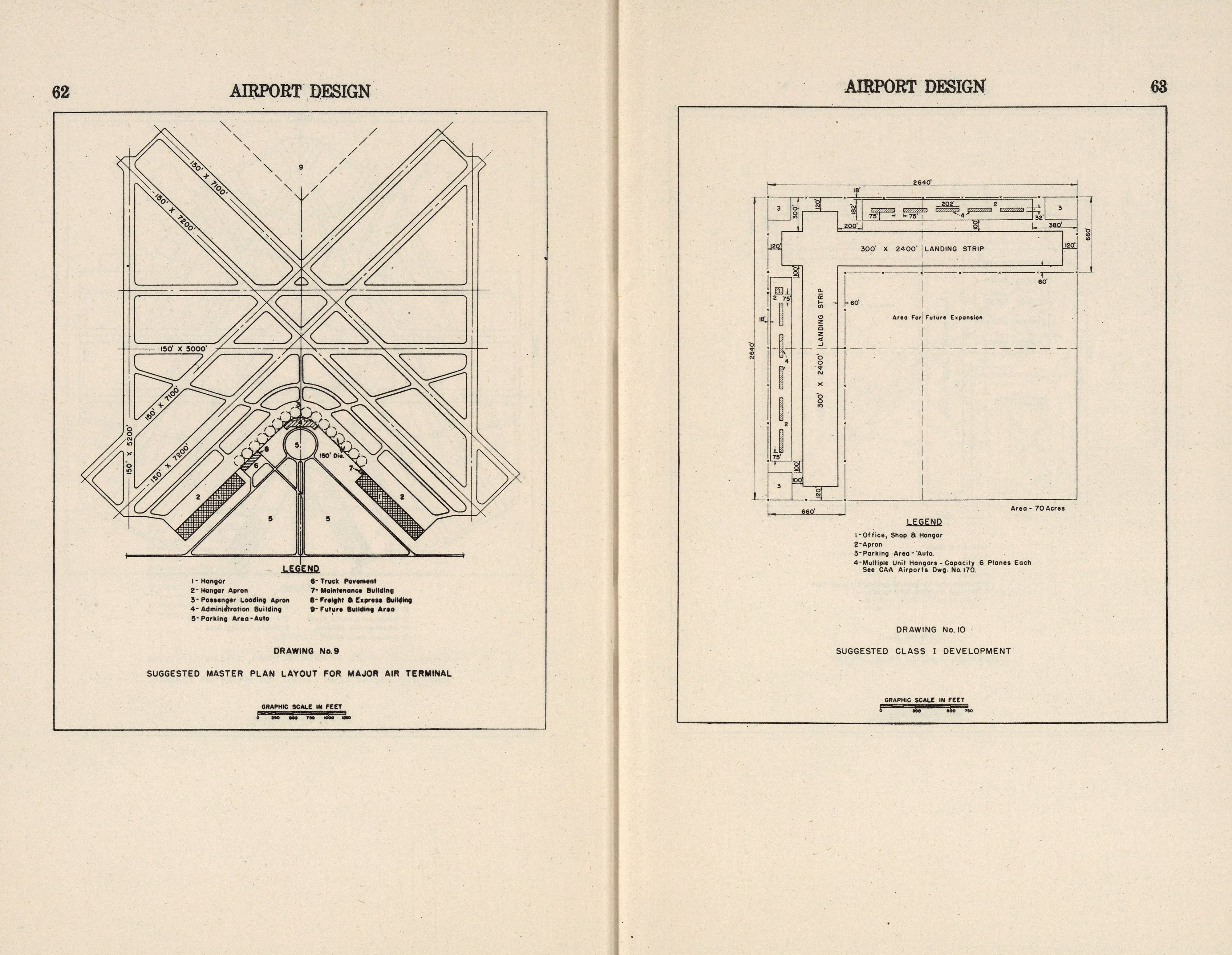
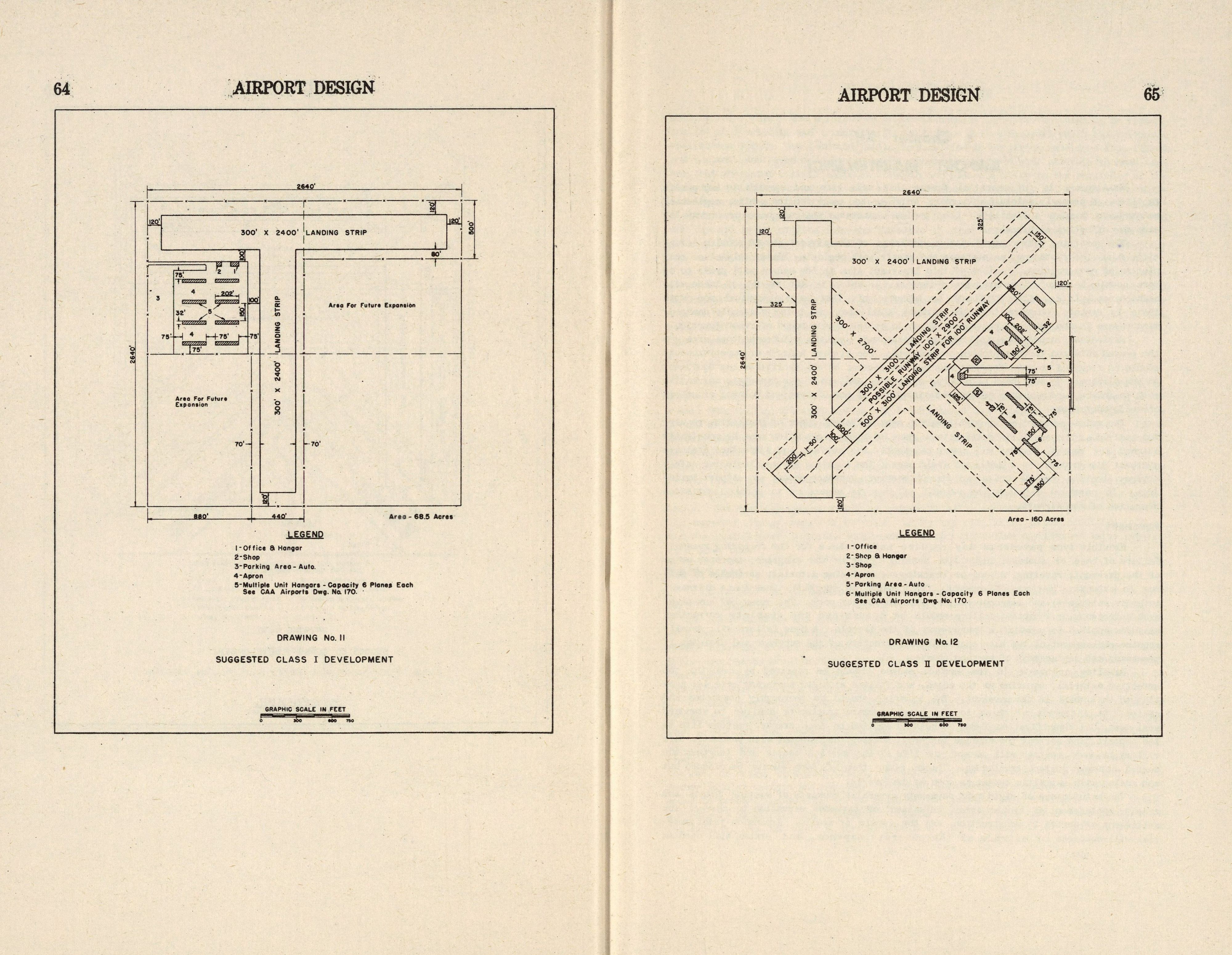





Комментарии
Добавить комментарий